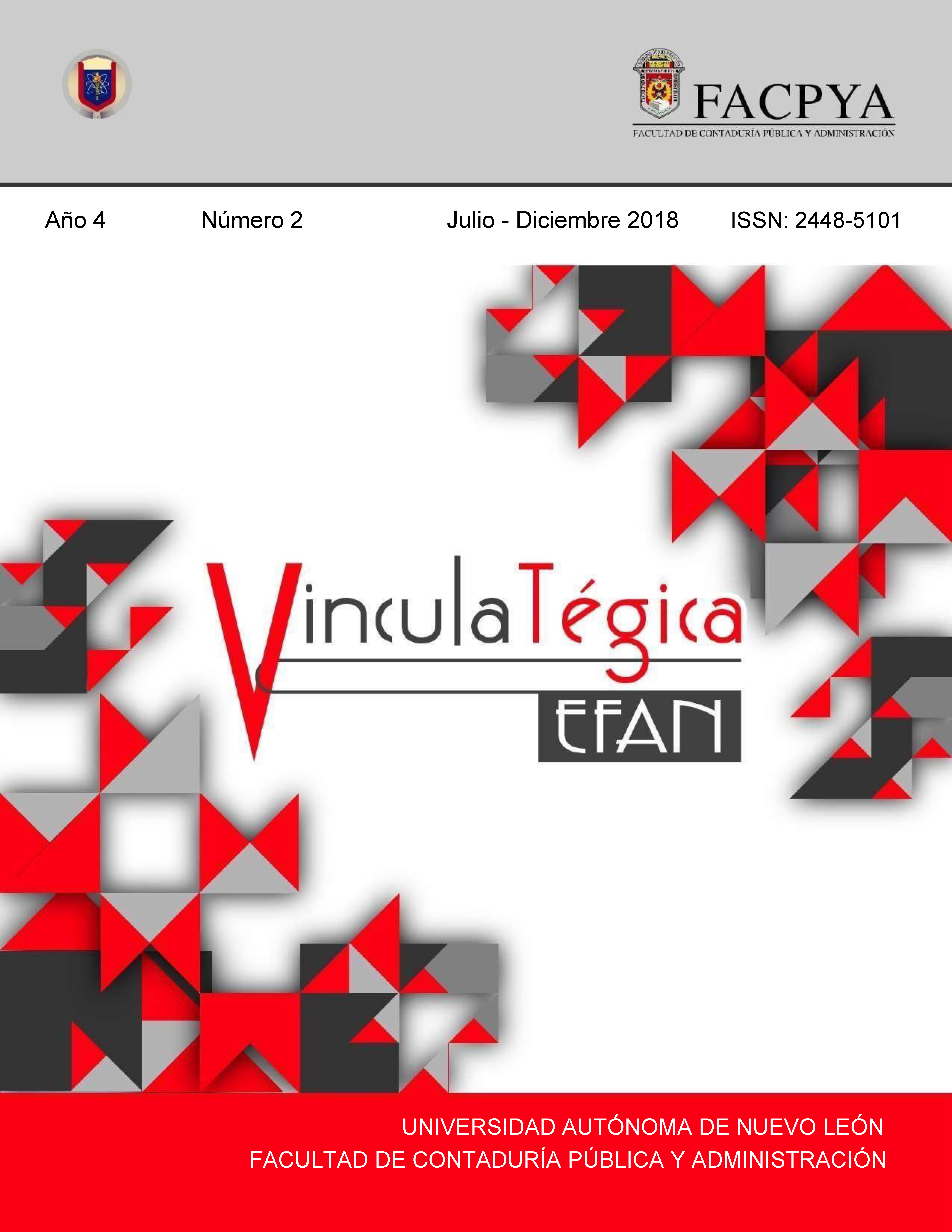Variables del servicio determinantes de la satisfacción del cliente de una empresa de servicios líder, caso de estudio “Pipas La Vena” en Puerto Vallarta, Jal.
DOI:
https://doi.org/10.29105/vtga4.1-913Keywords:
satisfacción, cliente, servicioAbstract
In Puerto Vallarta, the industry of water treatment services and alternative services is headed by the giant parastatal SEAPAL (2017), but this did not prevent new private companies from coming to compete with alternative services for the private sector. In this context, the company Pipas La Vena has presented a significant growth at a regional level, has secured a place at the top of the market. The objective was to determine the variable of customer service that has been the main cause to achieve the satisfaction of the company's customers with a qualitative approach under the inductive method, of non-experimental design-encapsulated. It was possible to identify that the security offered by the company, as well as the tangibility of the products and services offered to the clients, are the dimensions that have allowed the positioning, growth and development of the company in the local, regional and state environment.
Downloads
References
Agendas de competitividad de los destinos turísticos de México (2013): Puerto Vallarta, Jalisco. México: Secretaría de Turismo. Atlantic International University. (2009).
Atlantic International University. En La administración en México: http://cursos.aiu.edu/administracion/pdf%20leccion%204/tema%204.pdf
Ayuntamiento de Puerto Vallarta. (agosto de 2017). En Desarrollo Económico: http://www.puertovallarta.gob.mx/2015-2018/Dependencias/DesarrolloEconomico.php?arm=ContextoEconomico
Chiavenato, I. (2004). Teorías de la administración. México: Stheen-Robinson.
Chiavenato, I. (2008). Teorías Administrativas. México: Stepens-robins.
Chiavenato, I. (2009). Gestión del talento humano. México: McGraw-Hill.
DENUE. (2017). En http://www.beta.inegi.org.mx/app/mapa/denue/
Gobierno Municipal de Puerto Vallarta. (2015). En Desarrollo Económico: http://www.puertovallarta.gob.mx/2015-2018/Dependencias/DesarrolloEconomico.php?arm=Capital Humano
Hernández, R. (2010). Metodología de la Investigación. México, D. F.: McGraw-Hill.
INADEM, INEGI, BANCOMEXT y SE. (2016). Boletín de Prensa
Núm. 285/16. Aguascalientes, Ags.
INEGI. (2017). Obtenido de DENUE: http://www.beta.inegi.org.mx/app/mapa/denue/default.aspx
INEGI. (2017). INEGI: WWW.INEGI.COM
Kotler, P. (2007). Dirección de Mercadotecnia. México.
Laschera, H., & Penedo, E. (2015). Aplicación de un modelo de gestión de recursos humanos. Argentina: Escuela Argentina de Negocios.
Méndez, C. (2012). Metodología, diseño y desarrollo del proceso de investigación con énfasis en Ciencias Empresariales. Ciudad de México, México: Limusa.
Mondy, R. (2010). Administración de Recursos Humanos. México: Pearson.
Palacios, J. J. (noviembre de 2017). Entrevista inicial. (A. O. Monteón, entrevistador)
Pipas La Vena. (2017). En Empresa: http://pipaslavena.com/empresa/
Robbins, S. (2014). Administración. Ciudad de México, México: Pearson.
Schemener. (1986).
SEAPAL. (2017). En Acerca de: http://www.seapal.gob.mx/acerca-de/
Secretaría de Economía. (2017). Información Económica y Estatal Jalisco. Jalisco. Secretaría de Economía. (2017).
Sistema de Información Empresarial Mexicano. En Estadísticas por estado: https://www.siem.gob.mx/siem/estadisticas/EstadoTamanoPublico.asp?p=1
Secretaría de Trabajo y Previsión Social. (2017). Observatorio Laboral. Obtenido de Carreras con mayor número de ocupados: http://www.observatoriolaboral.gob.mx/#/ocupados-top-ten
Sistema de consulta para el estado de Jalisco. (2016). En Indicadores municipales: http://indicadoresmunicipales.jalisco.gob.mx
Tamayo, M. (2014). El proceso de la investigación científica. Ciudad de México, México: Limusa.
Teorema Ambiental. (marzo de 2001). En Vallarta, planta prototipo en tratamiento de aguas negras: http://www.teorema.com.mx/agua/vallarta-planta-prototipo-en-tratamiento-de-aguas-negras/
Downloads
Published
How to Cite
Issue
Section
License

This work is licensed under a Creative Commons Attribution 4.0 International License.
a). Authors keep copyright and give the journal the right of the first publication of the work under a Creative Commons attribution license. This license allows others to share the work as long as original authorship and initial publication in this journal is acknowledged.
b). Authors may make other independent and additional contractual agreements for the non-exclusive distribution of the version of the article published in this journal (e.g., include it in an institutional repository or publish it in a book) as long as they clearly indicate that the work was published for the first time in this journal.







